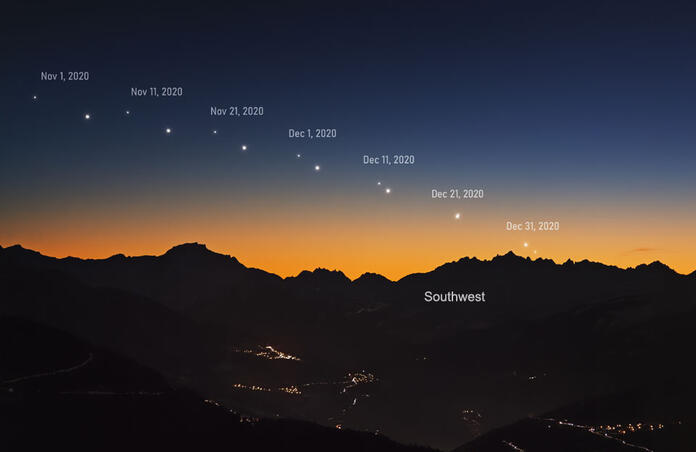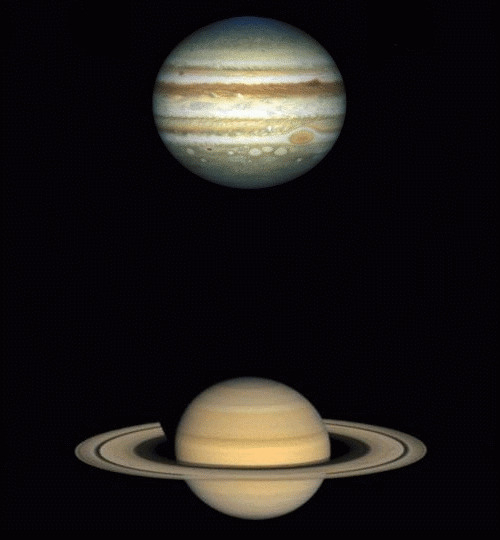This year's Christmas Star - The Jupiter-Saturn conjunction

On December the 21st, Jupiter and Saturn will have their closest great conjunction of the past 397 years. For that we have a special treat lined up for you … read on to find out!
Let’s first introduce the two protagonists: Jupiter and Saturn are the largest and second-largest planets in our Solar System, respectively, they are located beyond the asteroid belt. Jupiter is most well-known for its red spot, a storm which could easily engulf the Earth. When Galileo Galilei first used a telescope to look at celestial objects, what he observed are the four largest of Jupiter’s moons (currently we count 79). Ganymede, the largest one, is bigger than Mercury!
Saturn is most famous for what Galilei described as “ears”, its rings. In those hide even more moons than Jupiter, namely 82. Both Jupiter and Saturn's moons are exciting for astrobiologists (scientists studying life elsewhere in the Universe) as some of them may have oceans of liquid water underneath their ice covers. Saturn is the most distant planet that can be observed with the naked eye, as Uranus and Neptune's apparent magnitudes are too low, which makes their conjunction even more interesting as everyone can observe it from their backyard.

Anyway, the property we are most interested in here is there orbital period, i.e. the time they take for these planets to complete an orbit around the Sun. For Earth this was defined as one year, for Jupiter it is 11.86 of those terrestrial years and Saturn’s is 29.5 years.
Noting that all the planets in the solar system have orbits roughly in the same plane, this means that every 19.7 years, Jupiter and Saturn will appear very close together in our night sky, the moment of their great conjunction. Their distance is measured in angles and over a period of one thousand years, there are typically only six great conjunctions where the minimum separation between Jupiter and Saturn is less than 0.2 degrees: 1623, 1683, 2020, 2080, 2417, and 2477.
Some theories suggest that the biblical star of Bethlehem was a great conjunction, and throughout history this event of celestial objects coming closer until they almost merge has been interpreted by astrologers, not the least this year when it falls on the date of the Winter Solstice, interpreted as a moment of change (but don't we all need this after this year?).
What was and still is so fascinating about this occurrence, visible with the naked eye, is its rarity – our Moon has a conjunction with each of the planets every month, and other closer planets have shorter orbital periods so they’ll also have conjunctions more often than the two gas giants.
If you’ve been looking up at the night sky recently, you might have seen these two bright spots coming closer and closer together each night, just like shown in the cover image. What we are preparing for you for Monday is an incredible live stream, so watch out for the details of this !
Cover image: Sebastian Voltmer (APOD 2020 December 15)
Image credits:
1 - Jupiter and Saturn, NASA
